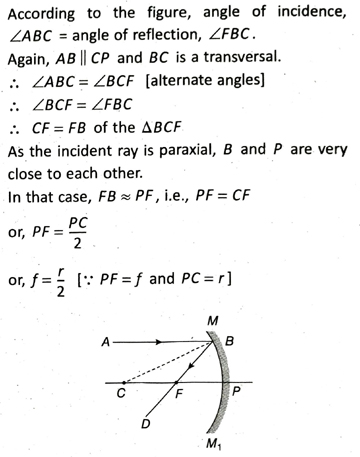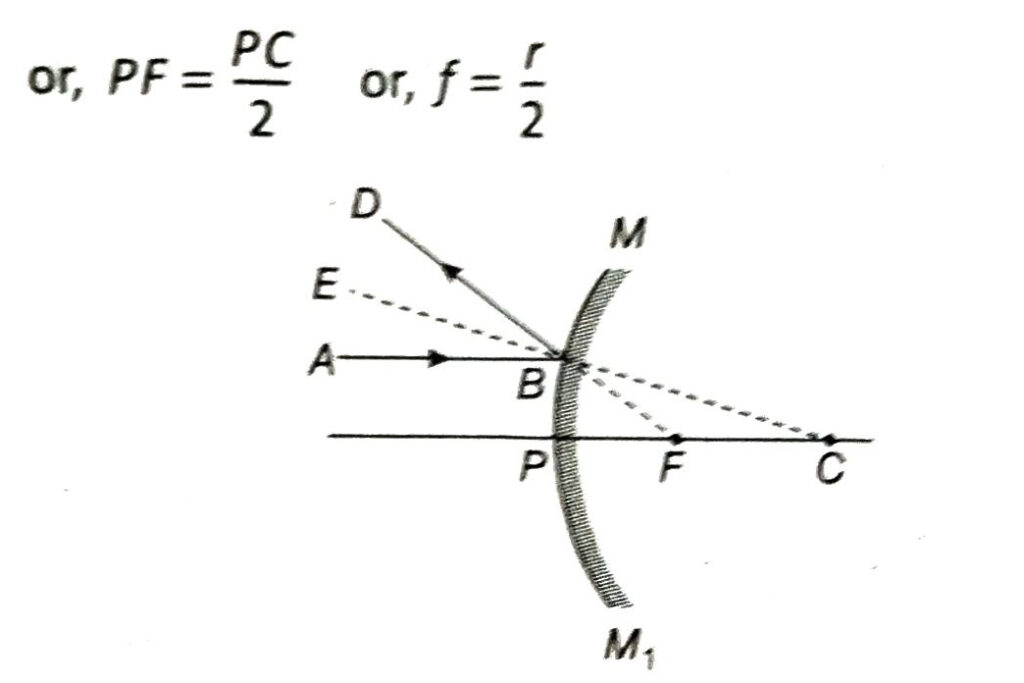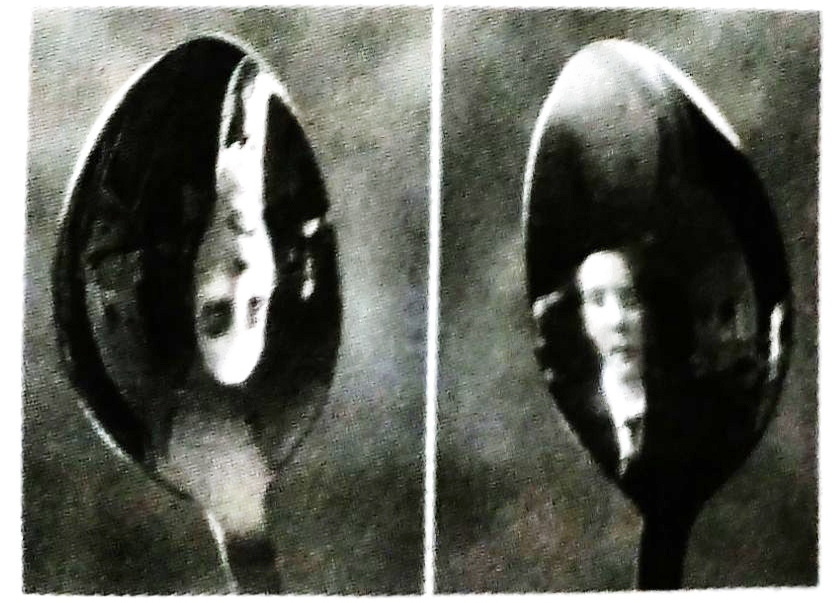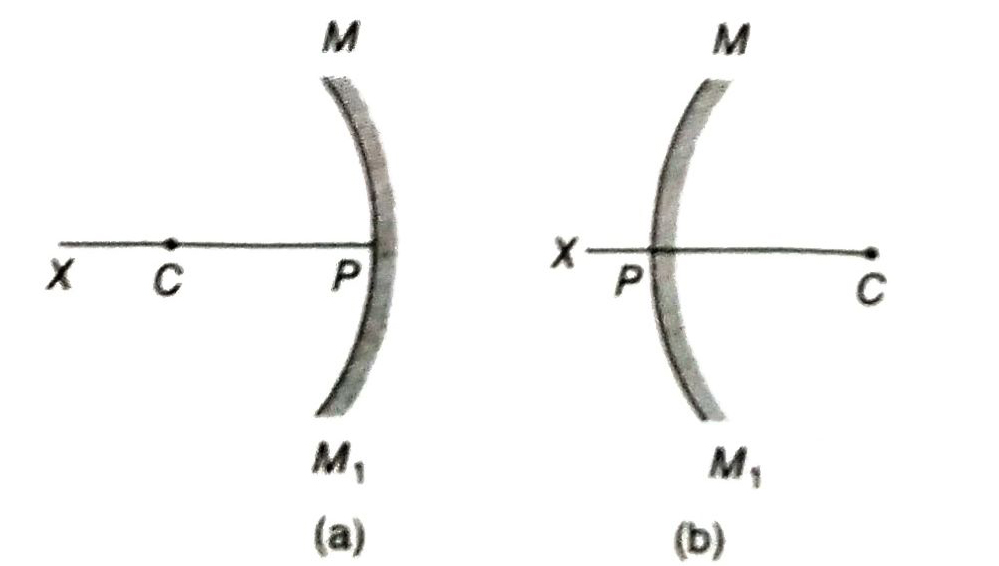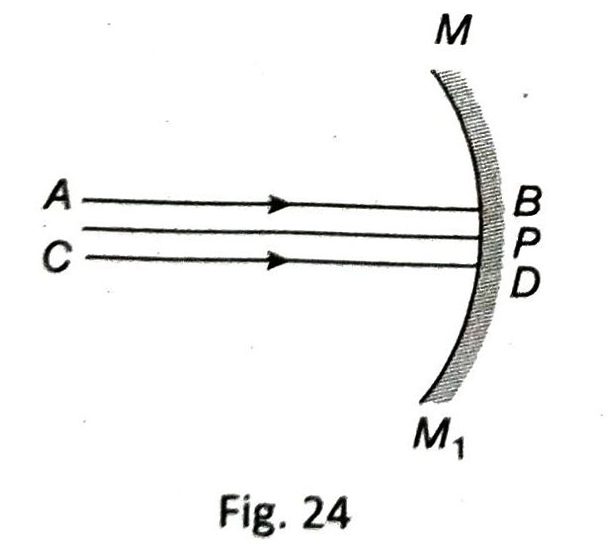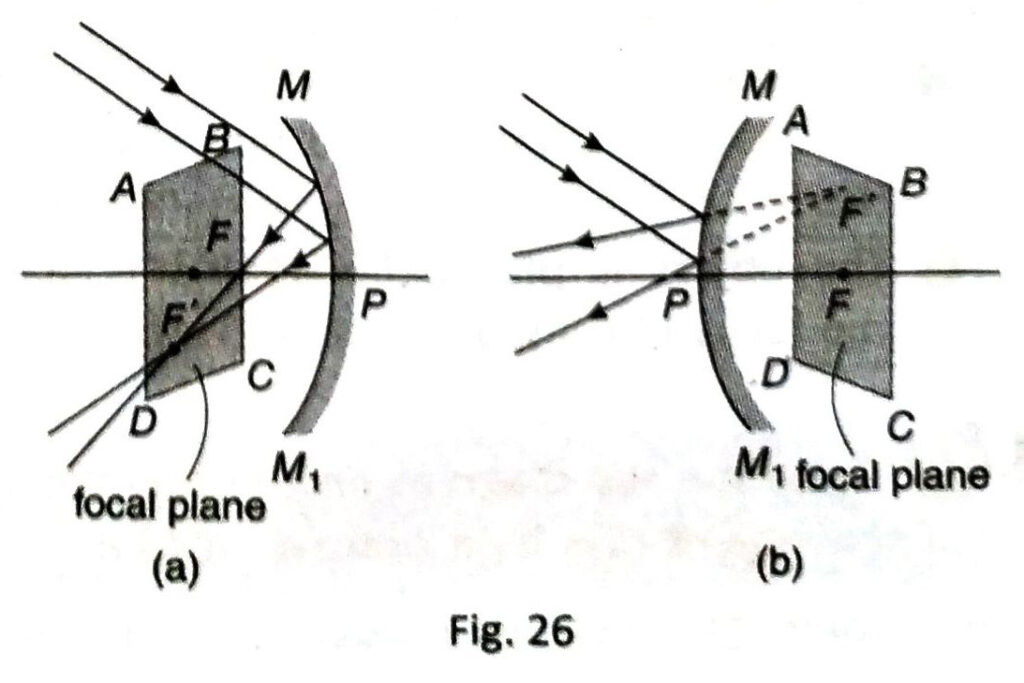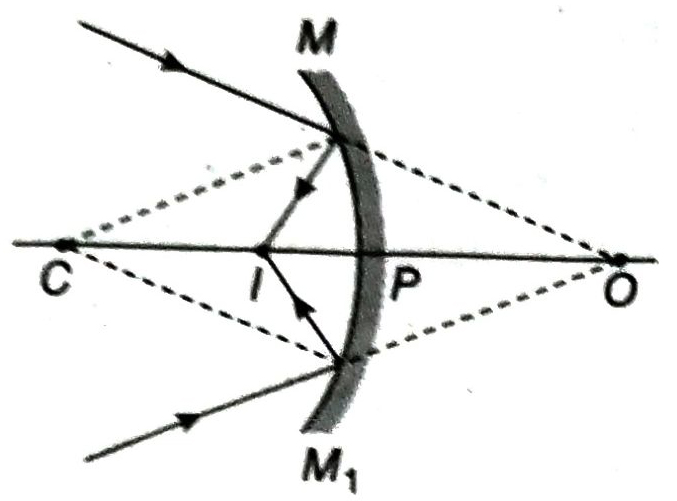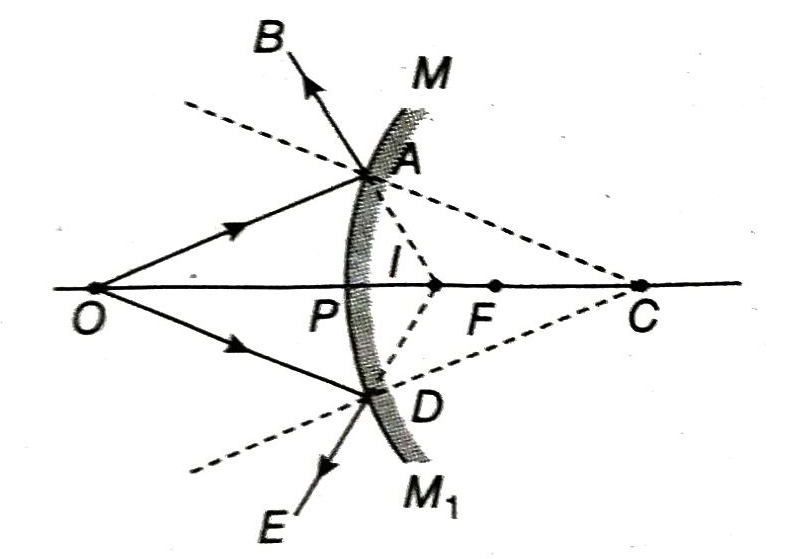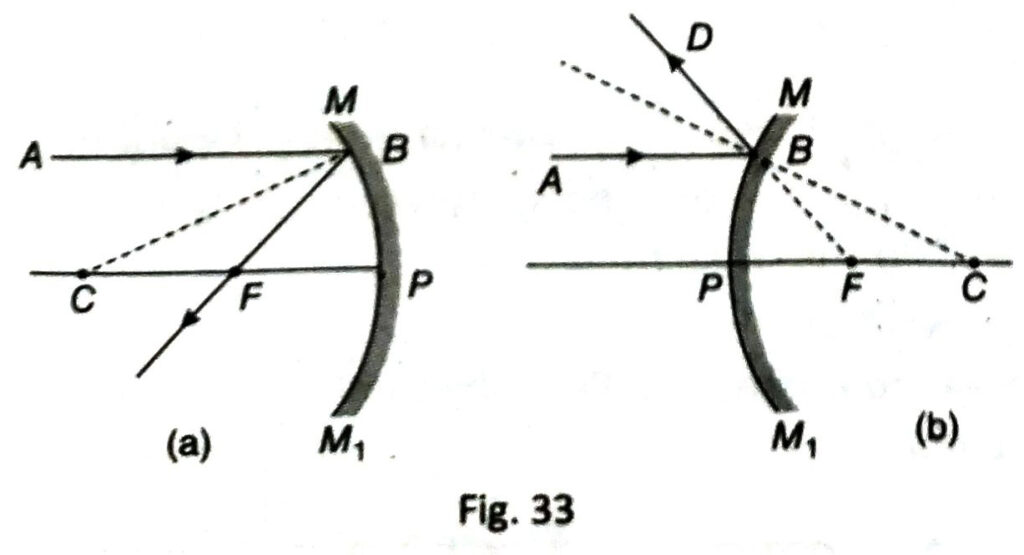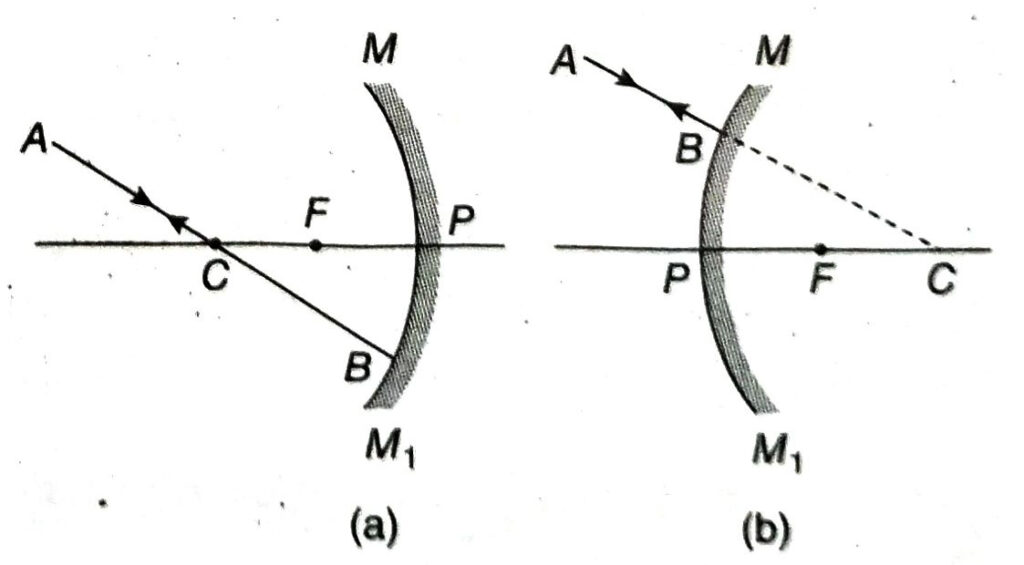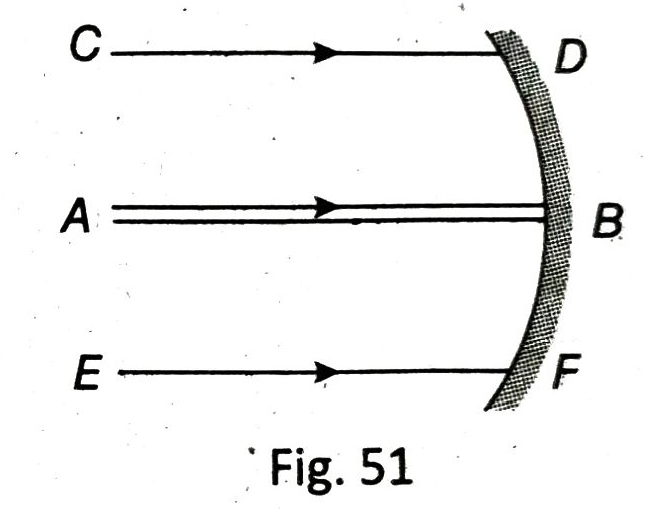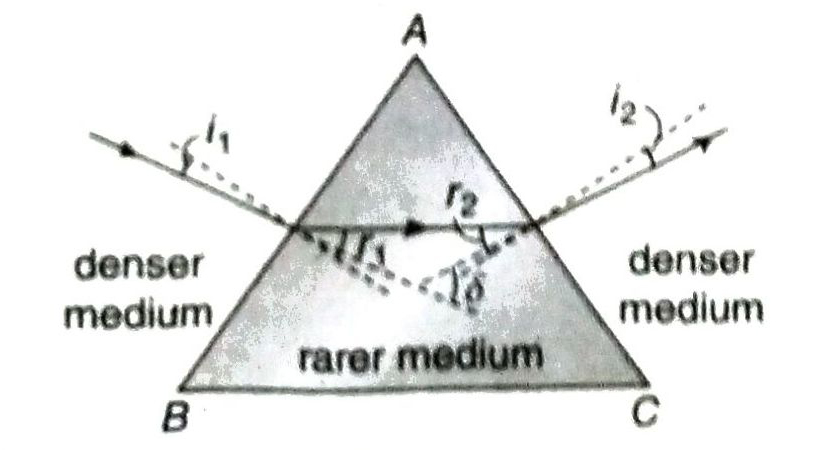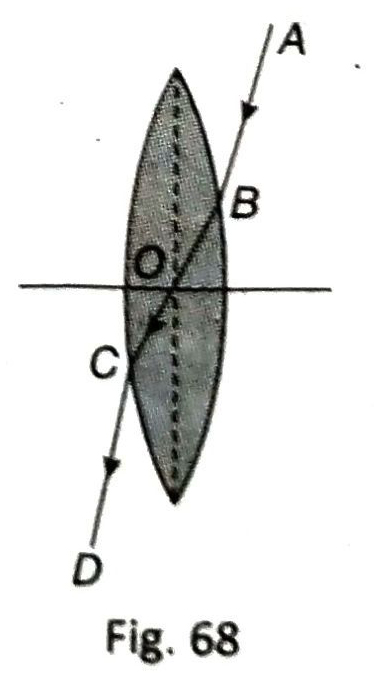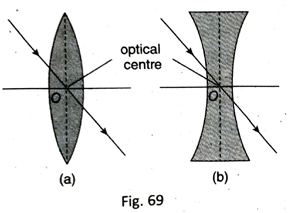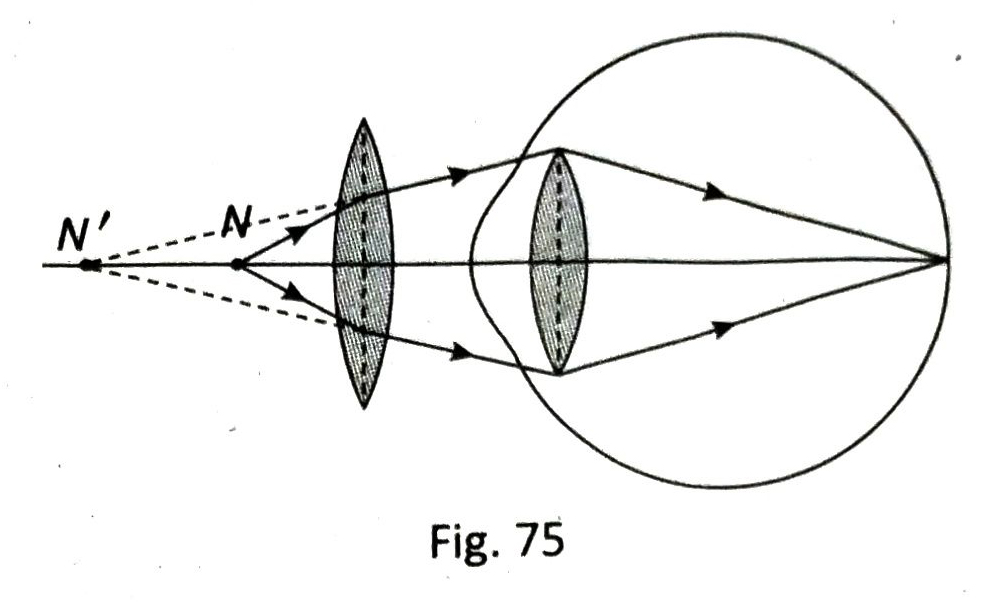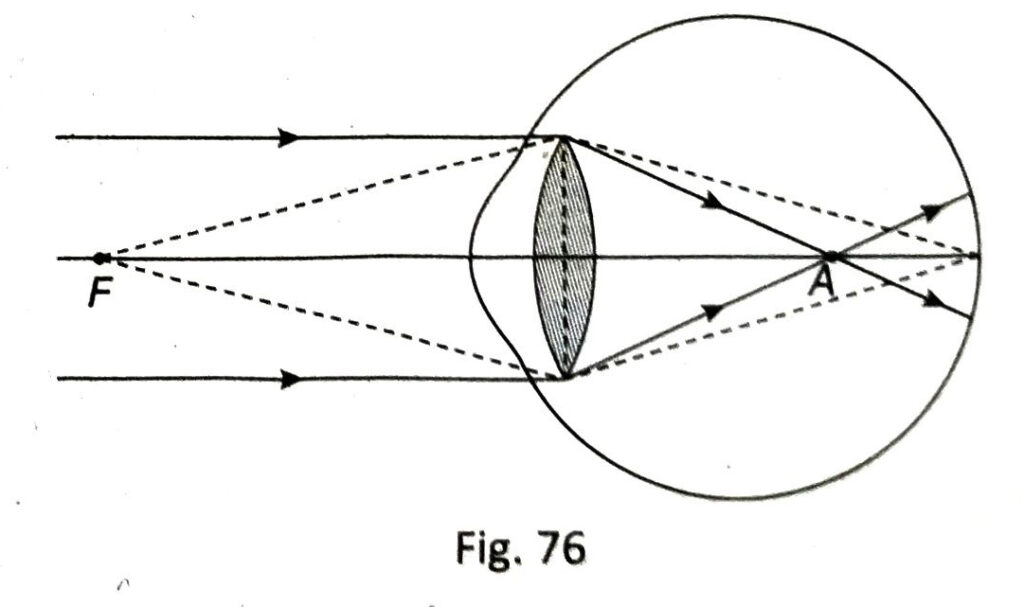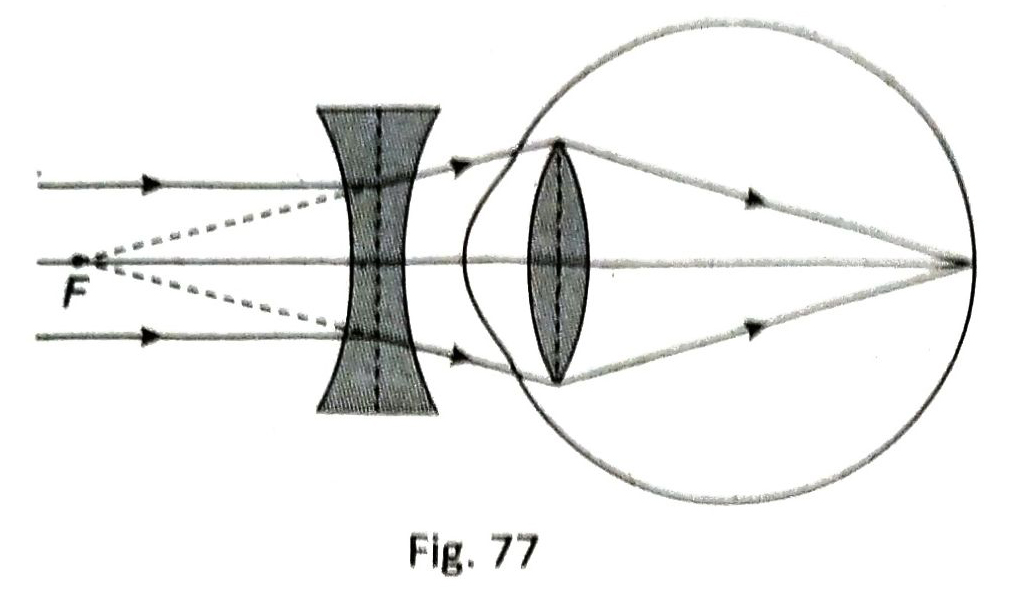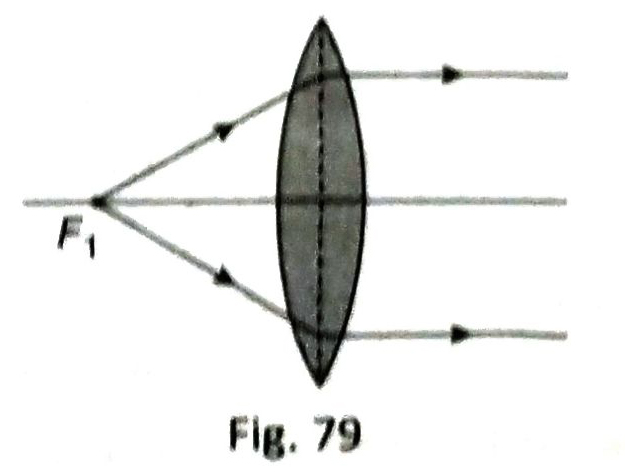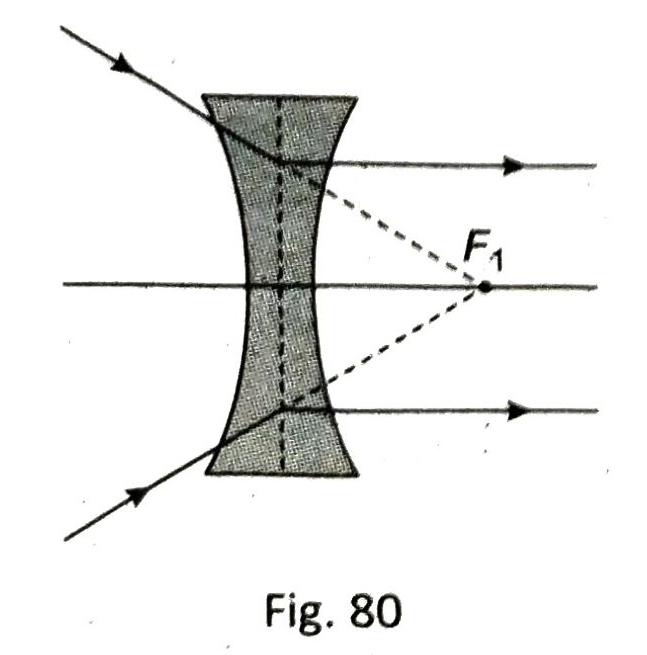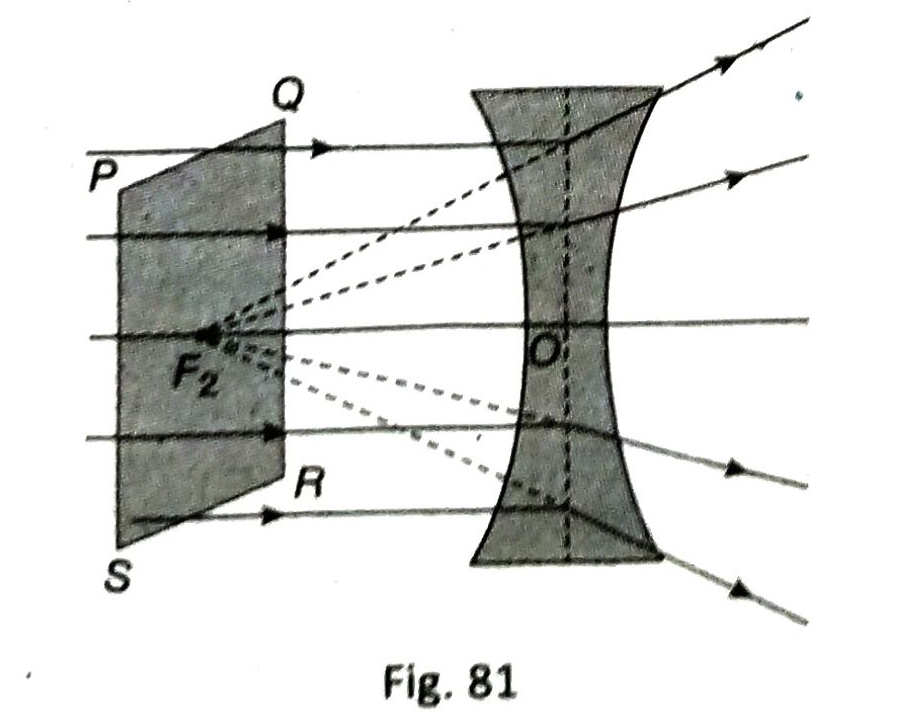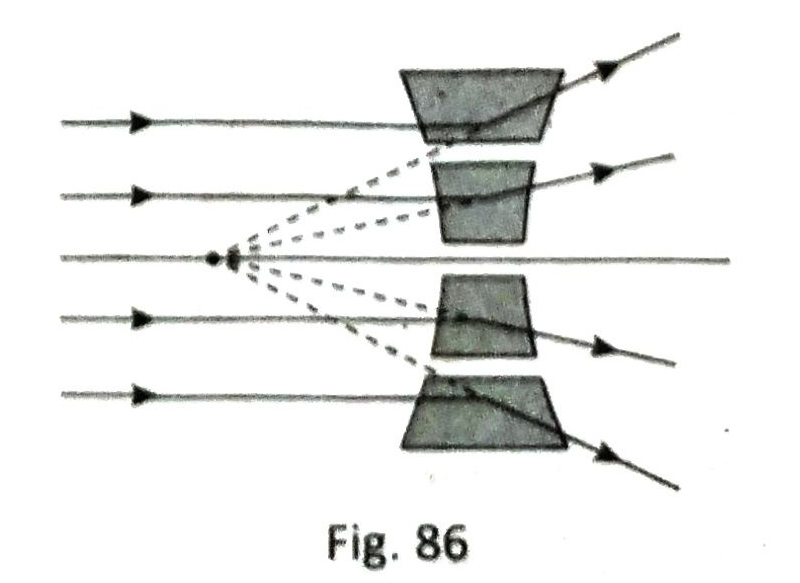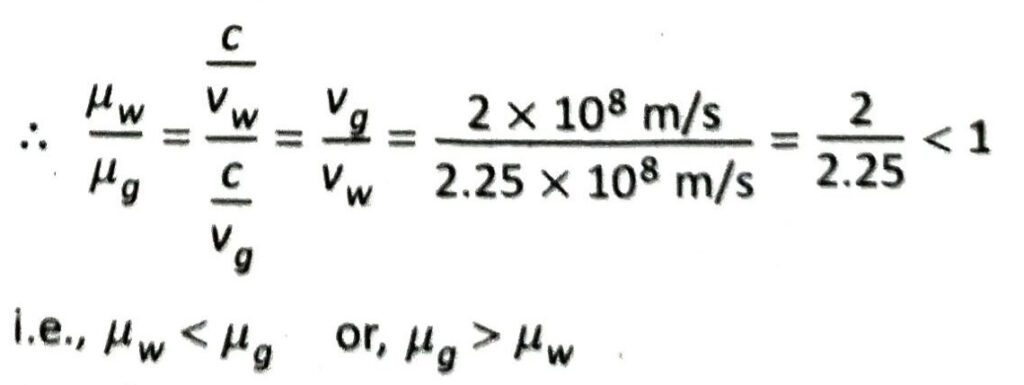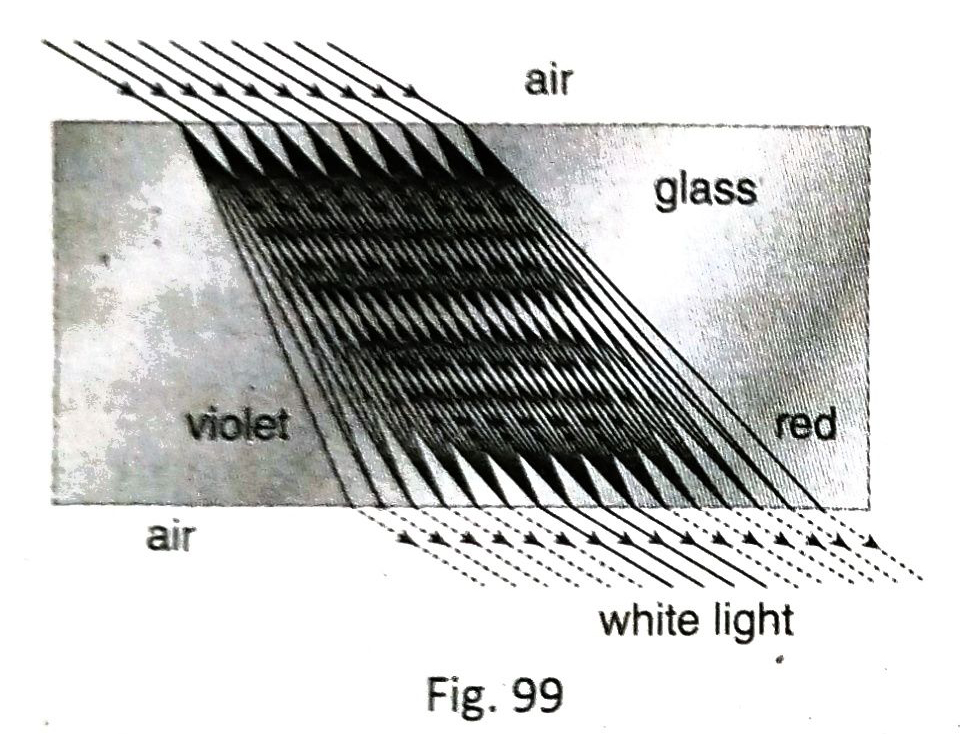WBBSE 10th Class Science Solutions Physical Science & Environment Chapter 5 Light
West Bengal Board 10th Class Science Solutions Physical Science & Environment Chapter 5 Light
WBBSE 10th Class Physical Science & Environment Solutions
Synopsis
Reflection of Light at Spherical Mirror
- If any reflecting surface is a part of a hollow sphere, then it is called a spherical mirror. Spherical mirror is of two types: (1) concave mirror and (2) convex mirror.
- A spherical mirror is called a concave mirror when its concave surface acts as its reflecting surface.
- A spherical mirror is called a convex mirror when its convex surface acts as its reflecting surface.
- The centre of curvature of a spherical mirror is the centre of the sphere of which the mirror is a part.
- The radius of the sphere of which this mirror is a part, is called the radius of curvature of the spherical mirror.
- The straight line passing through the pole of the spherical mirror and the centre of curvature of the mirror is called the principal axis of the mirror.
- In a spherical mirror, those rays which fall near the pole and make a small angle with the principal axis are called paraxial rays.
- A beam of rays parallel to the principal axis of a concave mirror with a small aperture after reflection from the mirror converges to a definite point on the principal axis which is I called the principal focus of the concave mirror.
- A beam of rays parallel to the principal axis of a convex mirror with a small aperture after reflection from it appears to diverge from a fixed point on the principal axis, which is called the principal focus of the convex mirror.
- A plane surface perpendicular to the principal axis and passing through the principal focus of a spherical mirror is called its focal plane.
- If the focal length and radius of curvature of a spherical mirror are f and r respectively, then f = r/2.
TOPIC – A
Reflection of Light at Spherical Mirror
SHORT AND LONG ANSWER TYPE QUESTIONS
Q.1 What are the focal length and focal plane of a spherical mirror? Show them with appropriate figures.
Ans. Focal length: The distance between the pole and the principal focus of a spherical mirror is called its focal length.
Focal plane: A plane surface perpendicular to the principal axis and passing through the principal focus of a spherical mirror is called its focal plane.
In Fig. (a) and 18(b), MPM₁ is the principal section of both the concave and the convex mirrors, where P is the pole and F is the principal focus. PF is the focal length and ABCD is the focal plane.
Q.2 Establish a relationship between focal distance and radius of curvature of a concave mirror for paraxial rays.
Ans. MPM1 is the principal section of a concave mirror with small aperture. P, F and C are pole, focus and centre of curvature principal respectively of this concave mirror.
Focal length, PF=f and radius of curvature, PC = r. A ray of light AB parallel to the principal axis of the concave mirror falls at point B and passes through the focus (F) after reflection. C and B are joined by a straight line. CB is the normal on the mirror at point B.
Q.3 Establish a relationship between focal distance and radius of curvature of a convex mirror for paraxial rays.
Ans. MPM1 is the principal section of a convex mirror with a small aperture. P, F and C are pole, principal focus and centre of curvature respectively of this convex mirror.
∴ focal length, PF = f and radius of curvature, PC = r.
A ray AB, parallel to the principal axis of the convex mirror, falls at point B and is reflected along the path BD. If BD is extended backward, it intersects principal focus at point F. C and B are joined by a straight line and extended up to E. CE is the normal on the mirror at point B.
According to the figure, angle of incidence, ∠ABE = angle of reflection, ∠DBE
Again, AB || PC and EC is the transversal.
∴ ∠ABE = ∠FCB [corresponding angle]
Again, ∠FBC = ∠DBE [vertically opposite angles]
∴ ∠FBC= ∠FCB
∴ FB = FC of the ΔBCF
If the incident rays are paraxial, the points B and P are very close to each other.
In that case, FB ≈ PF or, PF = FC
Q.4 What can you see if you place your face in front of the concave and convex sides of a shining spoon?
Ans. If one keeps his face near the concave side of the shining spoon, a magnified erect image can be seen in the spoon. If the face is now placed at a large distance from the poon, image becomes inverted and diminished. On the other hand, if one places his face in front of the convex side of the spoon, erect and diminished image will be seen for all distances of the face from the spoon.
Q.5 What is a spherical mirror? How many types of spherical mirrors are there? Mention them.
Ans. A spherical mirror is a reflecting surface which is a part of a hollow sphere.
There are two types of spherical mirrors:
(1) Concave spherical mirror
(2) Convex spherical mirror
Q.6 Define a convex mirror and a concave and a concave mirror.
Ans. Convex mirror: A spherical mirror, whose bulging or convex surface is used for reflection is called a convex mirror [Fig. 22(a)].
Concave mirror: A spherical mirror whose concave surface is used for reflection is called a concave mirror [Fig. 22(b)].
Q.7 Define pole and principal axis of a spherical mirror. Show them with appropriate figures.
Ans. Pole: The centrel point P of aperture of the spherical mirror is called its pole.
Principal axis: The principal axis of a spherical mirror is a straight line XP obtained by connecting the centre of curvature and the pole of the spherical mirror.
Q.8 Define centre of curvature and radius of curvature of a spherical mirror. Show them with appropriate figure.
Ans. Centre of curvature: The centre of curvature of a spherical mirror is the centre of the hollow sphere of which the mirror is a part. In Fig., C is the centre of curvature.
Radius of curvature: The radius of the hollow sphere of which this spherical mirror is a part, is called the radius of curvature of the spherical mirror. In Fig., PC is the radius of curvature.
Q.9 What are paraxial rays?
Ans. Paraxial rays are those rays which fall very close to the pole of the spherical mirror and make very small inclination with the principal axis.
In Fig. 24, MPM₁ is the principal section of a concave mirror whose pole is P. The two rays AB and CD fall near the pole and the inclination of these two rays with the principal axis is small. So AB and CD are called paraxial rays.
Q.10 What is the principal focus of a concave mirror and a convex mirror?
Ans. Principal focus of a convex mirror: A beam of rays parallel to the principal axis of a convex mirror with a small aperture, after reflection from its, appears to diverge from a fixed point on it principal axis. This fixed point is called the principal focus of the convex mirror. In Fig. 25 (b), F is the principal focus of convex mirror.
Principal focus of a concave mirror: A beam of rays parallel to the principal axis of a concave mirror with a small aperture, after reflection from it, converges to a fixed point on its principal axis. This fixed point is called the principal focus of the concave mirror. In Fig. 25(a), F is the principal focus of concave mirror.
Q.11 What is the secondary focus of a spherical mirror?
Ans. A parallel beam of rays inclined with the principal axis, incident on a spherical mirror. In case of a concave mirror, the reflected rays meet at a point on its focal plane. On the other hand, if the mirror is a convex one, the reflected rays appear to diverge from a point on the focal plane. In each case the said point on the focal plane is called the secondary focus of the mirror used.
In Fig. 26(a) and (b), MPM1 is the principal section of both the concave as well as the convex mirror, where P is the pole, F is the principal focus, ABCD is the focal plane and F’ is the secondary focus.
Q.12 Draw the ray diagram on the reflection of convergent rays by a concave mirror.
Ans. Here convergent rays are incident on a concave mirror. In absence of the mirror, the rays would have met at point O. After reflection from the mirror, the reflected rays meet at a point on the I principal axis. Here, O is the virtual object and I is its real image. The convergent rays remain convergent even after reflection.
Q.13 Show the image formation of a point object in a convex mirror with a suitable figure.
Ans. Diverging light rays coming from a point object O, placed on the principal axis of a convex mirror become more diverging after reflection by the mirror and appear to diverge from a point I behind the mirror. I is the virtual image of point object O.
Q.14 Draw the ray diagram for each of a concave mirror and a convex mirror under the following condition: The incident ray is parallel to the principal axis.
Ans. Charactaristic of incident ray: It is parallel to the principal axis.
Characteristic of reflected ray:
In case of a concave mirror [Fig. 33(a)]: Reflected ray is directed towards the focal point.
In case of a convex mirror [Fig. 33(b)]: If the reflected ray is extended backwards, it passes through the focal point.
Q.15 Draw the ray diagram for each of a concave and a convex mirrors under the following condition: The incident ray is directed towards the focal point.
Ans.
Characteristic of incident ray: It is directed towards the focal point (F).
Characteristic of reflected ray: It is parallel to the principal axis for both the mirrors.
Q.16 Draw the ray diagram for each of a concave mirror and a convex mirror under the following condition: The incident ray is directed towards the centre of curvature of the mirror.
Ans.
Characteristic of incident ray: It is directed towards the centre of curvature (C) of the mirror.
Characteristic of reflected ray: It retraces the path of the incident ray in both the cases.
VERY SHORT ANSWER TYPE QUESTIONS
Choose the correct answer
1. What is the radius of curvature of a spherical mirror whose focal length is f ?
A. 2f
B. f
C. 3f
D. f/2
Ans. A
2. What is the focal length of a concave mirror whose radius of curvature is 20 cm?
A. 20 cm
B. 15 cm
C. 10 cm
D. 40 cm
Ans. C
3. If an object is placed between the pole and the principal focus of a concave mirror, the image will be
A. real, magnified
B. virtual, diminished
C. real, diminished
D. virtual, magnified
Ans. D
4. If an object is placed beyond the centre of curvature of a concave mirror, the image will be
A. real, magnified
B. virtual, diminished
C. real, diminished
D. virtual, diminished
Ans. C
5. If an object is kept at the centre of curvature of a concave mirror, the image will be
A. real, of the same size
B. virtual, diminished
C. real, diminished
D. virtual, magnified
Ans. A
6. If an object is kept between the focus and the centre of curvature of a concave mirror, the image will be
A. real, magnified
B. virtual, diminished
C. real, diminished
D. virtual, magnified
Ans. A
7. If an object is kept in front of a convex mirror, the image will be
A. virtual, magnified
B. virtual, diminished
C. virtual, of the same size
D. real, diminished
Ans. B
8. The following is used as the viewfinder of an automobile
A. concave mirror
B. plane mirror
C. convex mirror
D. none of the above
Ans. C
9. small aperture for a spherical mirror means an aperture of
A. less than 10⁰
B. less than 5°
C. less than 15°
D. less than 20⁰
Ans. A
10. A ray, parallel to the principal axis of a concave mirror, after reflection
A. passes through the centre of curvature
B. retraces its path
C. passes through the principal focus
D. passes through the pole of the mirror
Ans. C
11. In Fig. 51, paraxial rays are
A. AB
B. CD
C. EF
D. AB, CD, EF
Ans. A
12. A ray, parallel to the principal axis of a convex mirror, after reflection-
A. passes through the centre of curvature
B. appears to come from the centre of curvature
C. passes through the principal focus
D. appears to come from the principal focus
Ans. D
13. A ray, directed toward principal focus of a concave mirror, after reflection
A. returns back following the same path
B. passes parallel to the principal axis
C. passes through the centre of curvature
D. passes along the principal axis
Ans. B
14. A ray, directed towards the principal focus of a convex mirror, after reflection
A. returns back following the same path
B. passes parallel to the principal axis
C. passes through the centre of curvature
D. appears to come from the centre of curvature
Ans. B
15. A ray, directed towards the centre of curvature of a concave mirror, after reflection
A. returns back following the same path
B. passes parallel to the principal axis
C. passes through the principal focus
D. passes along the principal axis
Ans. A
16. A ray, directed towards the centre of curvature of a convex mirror, after reflection
A. returns back following the same path
B. passes parallel to the principal axis
C. appears to come from the principal focus
D. passes through the principal focus
Ans. A
17. Number of principal focus of a spherical mirror
A. one
B. two
C. three
D. four
Ans. A
18. While using electric bulb, the type of mirror used as reflector is
A. concave
B. convex
C. plane
D. parabolic
Ans. B
19. The type of mirror used by dentist for examination of the teeth of a person is
A. concave
B. convex
C. plane
D. parabolic
Ans. A
20. The type of mirror used as saving mirror is
A. convex
B. concave
C. plane
D. parabolic
Ans. B
21. The angle of incidence for a ray of light passing through the centre of curvature of a concave mirror is
A. 0°
B. 45°
C. 90°
D. 180°
Ans. A
22. The angle of deviation of a ray of light incident on a concave mirror along the principal axis is
A. 0°
B. 90°
C. 180°
D. 360°
Ans. C
Answer in brief
1. When does a concave mirror form a virtual image of an object?
Ans. If an object is placed between the pole and the focus of a concave mirror, a virtual image of the object is formed.
2. When does a concave mirror form a real image of an object?
Ans. If an object is placed away from the focus of the concave mirror or the object distance is more than the focal length, a real image of the object is formed.
3. If an object is placed at a distance of more than 2f in front of a concave mirror, where is the image formed?
Ans. The image is formed in front of the mirror, between the focus and the centre of curvature.
4. If an object is placed at the centre of curvature of a concave mirror, where is the Image formed?
Ans. The image is formed too at the centre of curvature.
5. If an object is placed between the focus and the centre of curvature, in front of a concave mirror, where is the image formed?
Ans. The image is formed in front of the mirror at a distance more than 2f from the mirror.
6. State whether the virtual image of an object formed by a concave mirror is magnified or diminished.
Ans. The virtual image of an object formed by a concave mirror is magnified.
7. State whether the image of an object formed by a convex mirror is real or virtual.
Ans. The image of an object formed by a convex mirror is always virtual.
8. State whether the virtual image of an object formed by a convex mirror is magnified or diminished.
Ans. The virtual image of an object formed by a convex mirror is diminished.
9. State whether the centre of curvature of a concave mirror is situated in front of the reflecting surface or behind it.
Ans. The centre of curvature of a concave mirror is situated in front of it.
10. State whether the centre of curvature of a convex mirror is located in front of the reflecting surface or behind it.
Ans. The centre of curvature of a convex mirror is located behind the reflecting surface.
11. State whether the principal focus of a concave mirror is located in front of the reflecting surface or behind it.
Ans. The principal focus of a concave mirror is located in front of the reflecting surface.
12. State whether the principal focus of a convex mirror is located in front of the reflecting surface or behind it.
Ans. The principal focus of a convex mirror is located behind the reflecting surface.
13. How many principal focus points are there for a spherical mirror?
Ans. There is only one principal focus point for a spherical mirror.
14. How many secondary focus points are there for a spherical mirror?
Ans. There are innumerable secondary focus points for a spherical mirror.
15. What is the path of the reflected ray if the incident ray is directed towards the centre of curvature of a spherical mirror?
Ans. If the incident ray is directed towards the centre of curvature of a spherical mirror, the reflected ray retraces back the path of the incident ray.
16. Which type of mirror is used in a solar cooker?
Ans. A concave mirror is used in a solar cooker.
17. What is the nature of a spherical mirror if it always produces virtual image?
Ans. If the spherical mirror always produces virtual image, the mirror is convex in nature.
18. What is the focal length of a spherical mirror with a small aperture, when the distance between the focus and the centre of curvature of the mirror is 20 cm?
Ans. The focal length of a spherical mirror is 20 cm, when the distance between the focus and the centre of curvature of the mirror is 20 cm.
19. A spherical mirror forms an image of the same size as that of the object for a particular position of the object. What is the nature of the mirror?
Ans. The spherical mirror is concave in nature.
20. Is it possible for a mirror to form a virtual image which is smaller than the object?
Ans. Yes, a virtual image of an object formed by a convex mirror is smaller than the object.
21. What is the nature of the reflected beam of light when a parallel beam of light is incident on a concave mirror?
Ans. When a parallel beam of light is incident on a concave mirror, the reflected beam of light is converging in nature.
22. What is the nature of the reflected beam of light when a parallel beam of light is incident on a convex mirror?
Ans. When a beam of parallel light is incident on a convex mirror, the beam of reflected light is diverging in nature.
23. What type of mirror is used as the reflector in a street lamp?
Ans. A convex mirror is used as the reflector in a street lamp.
24. State whether the image of an object placed at the centre of curvature of a concave mirror is diminished or magnified.
Ans. The image of the object is neither diminished nor magnified; it is of the same size as that of the object.
25. What is the value of the focal length of a plane mirror?
Ans. The focal length of a plane mirror is infinite.
26. Is the virtual image of an object formed by a concave mirror, laterally inverted?
Ans. Yes, the virtual image of an object formed by a concave mirror is laterally inverted.
27. Keeping the relative position of an object with respect to a spherical mirror unchanged, the entire arrangement is immersed in water. Will there be any change in the position of the image?
Ans. No, the position of the image with respect to the mirror will remain unchanged.
28. What type of mirror is used in a reflecting telescope?
Ans. A concave mirror is used in a reflecting telescope.
29. Among a plane, a concave and a convex mirror, which one has the largest field of view?
Ans. Among the three mirrors, a convex mirror has the largest field of view.
30. What is the value of the radius of curvature of a plane mirror?
Ans. The radius of curvature of a plane mirror is infinitely large.
31. The focal length of a concave mirror is 10 cm. What is its focal length when it is immersed in water?
Ans. When the concave mirror is immersed in water, its focal length remains unchanged. So, the focal length of the mirror remains 10 cm.
32. What is the nature of the mirror of a dentist?
Ans. The mirror of a dentist is concave in nature.
33. Which type of mirror is used in the headlight of an automobile?
Ans. A concave mirror is used in the headlight of an automobile.
Fill in the blanks
1. The concave side of a shining spoon behaves like a ………. mirror.
Ans. concave
2. The convex side of a shining spoon behaves like a ………. mirror.
Ans. convex
3. The …………. focus of a spherical mirror is a The fixed point.
Ans. principal
4. The radius of curvature of a spherical mirror is ………… of that of the focal length.
Ans. double
5. Between a concave mirror and a convex mirror, a ………. mirror is converging.
Ans. concave
6. Between a concave mirror and a convex mirror, a …………. mirror is diverging.
Ans. convex
7. The middle point of a spherical mirror is known as …………
Ans. pole
8. When an object is placed at the centre of curvature of a concave mirror, magnification of the image formed by the mirror is …………
Ans. unity
9. Only rays inclined at an angle less than about 10° to the principal axis is considered as …………. rays.
Ans. paraxial
10. ……….. mirror is used as rear-view mirror in vehicles.
Ans. Convex
State whether true or false
1. There is no deviation of light ray of reflection in a glass slab.
Ans. True
2. The image of an object placed at the centre of curvature of a concave mirror is formed at the centre of curvature itself.
Ans. True
3. The distance between the pole and the focus of a spherical mirror is known as the focal length.
Ans. True
4. The image formed by a concave mirror is always magnified in comparison to the object.
Ans. False
5. The image formed by a convex mirror is always diminished in comparison to the object.
Ans. True
6. Paraxial rays make small angle with the principal axis of a mirror.
Ans. True
7. A beam of light parallel to the principal axis of a concave mirror converge to a fixed point.
Ans. True
8. A beam of light parallel to the principal axis of a convex mirror converge to a fixed point.
Ans. False
9. Image formed by a concave mirror is always diminished in size.
Ans. False
10. Image of an object placed between pole and focus of a concave mirror is always inverted.
Ans. False
TOPIC – B
Refraction of Light
SHORT AND LONG ANSWER TYPE QUESTIONS
Q.1 Show the refraction of light in a prism with a ray diagram. What is the assumption made while drawing this diagram, regarding optical densities of the material of the prism and the surrounding medium?
Ans.
Description of figure:
ABC → Principal section of the prism
PQ → Incident ray
RS → Emergent ray
MQT → Normal drawn on the line AB at point
NRT → Normal drawn on the line AC at point R
Here, it has been assumed that the material of the prism is denser than the surrounding medium.
Q.2 What is the condition for an emergent ray to be directed away from the base of a prism? Show that in this condition net deviation is negative.
Ans. If the optical density of the material of the prism is less than the optical density of the surrounding medium, then the emergent ray will be directed away from the base.
According to the given condition, a ray diagram showing refraction in the prism is drawn.
According to figure, r1> i1 and i2 < r2
Thus, (r1 + r2) > (i1 + i2)
Therefore deviation,
δ = (i1 + i2) – (r1 + r2) < 0
0 i.e., net deviation is negative.
Q.3 What is refraction of light?
Ans. The passage of light ray from one medium to another medium through the surface of separation of the two media is called refraction of light. Alternate definition: During passage of light from a transparent homogeneous medium to another transparent homogeneous medium, light suffers a change in speed at the surface of separation of the two media. This phenomenon of change in light of light at the surface of separation of the two media is called refraction of light.
Q.4 Write down the laws of refraction of light.
Ans. The laws of refraction of light are:
- The incident ray, the refracted ray and the normal to the surface of separation of the two media at the point of incidence lie on the same plane.
- The ratio of the sine of the angle of incidence to the sine of the angle of refraction is constant. This constant depends on the nature of the associated media and colour of incident light.
Q.5 What do you mean by the optical density of a medium? Is it related to the physical density of the medium?
Ans. Optical density is the property of a medium on which the speed of light depends. More the optical density of a medium, slower the ray moves through it.
The optical density of a medium is not the same as its physical density. The physical density (ρ) of any substance is denoted by the ratio of its mass (M) and volume (V),
i.e., ρ = m/V
But the optical density of a medium is indicated by its refractive index (μ) which is calculated as μ = c/v (c = speed of light in vacuum, v = speed of light in the said medium).
Q.6 Why is a glass rod immersed in glycerine glass rod immersed invisible?
Ans. We see an object due to the irregular reflection of light from its surface. Lesser the amount of this reflection, lesser will be the visibility of the object to us. Again, lesser the difference between the refractive indices of two media greater will be the amount of refracted rays. This means diffuse reflection from the surface of separation is reduced. Here, the refractive indices of glycerine and glass are almost equal. So, when a glass rod is immersed in glycerine, practically no reflection of light occurs at the surface of separation. Maximum amount of light is refracted from glycerine to glass. So, the glass rod is not visible from outside.
Q.7 Explain the following parts for a prism: (1) Refracting surface, (2) Edge, (3) Base, (4) Principal section, (5) Refracting angle or angle of the prism.
Ans. A prism is shown in Fig. 65.
- Refracting surface: The two rectangular surfaces DEHG and DFIG are called refracting surfaces of this prism. [Fig. 65(a)]
- Edge: The edge of the prism is the straight line along which the two refracting surfaces of the prism meet. Here DG is the edge of the prism.
- Base: The rectangular plane opposite to the edge is called the base. Here, EFIH is the base.
- Principal section: It is an imaginary triangular plane surface right angled to the edge of the prism. This is called the principal section of the prism. Here, ABC is the principal section of the prism.
- Refracting angle: The angle between the two refracting surfaces of the prism is called the refracting angle or simply the angle of the prism. Here, ZBAC is the refracting angle of the prism.
VERY SHORT ANSWER TYPE QUESTIONS
Choose the correct answer
1. The following remains unchanged during refraction of light
A. speed of light
B. wavelength
C. frequency
D. none of these
Ans. C
2. If the angle of incidence for a prism is increased, angle of deviation
A. increases
B. decreases
C. increases at first, then decreases
D. decrease at first, then increases
Ans. C
3. For which colour of light among red, blue, green and yellow does a medium possess highest refractive index?
A. red
B. blue
C. green
D. yellow
Ans. B
4. For which colour of light among red, blue, green and yellow does a medium possess lowest refractive index?
A. red
B. blue
C. green
D. yellow
Ans. A
5. Refraction of light occurs from denser to a rarer medium. Angle of incidence is 30° and angle of refraction is 45°. What is the angle of deviation?
A. 10°
B. 15°
C. 20°
D. 30°
Ans. B
6. What will be the angle of incidence at the second refracting surface of a prism of refracting angle 60° for angle of refraction 25° at the first refracting surface?
A. 35°
B. 40°
C. 25°
D. 15°
Ans. A
7. A ray of light incident on an equilateral glass prism. If incident angle on first face is 30° and emergent angle is 50° then angle of deviation is
A. 10°
B. 20°
C. 30°
D. 40°
Ans. B
8. Angle of deviation in case of refraction with a normal incidence is
A. 90°
B. 60°
C. 30°
D. zero
Ans. D
9. When light wave goes from air into water, the quality that remains unchanged is its
A. speed
B. amplitude
C. wave length
D. frequency
Ans. D
10. When light travels from a denser to a rarer medium, its speed
A. remains same
B. decreases
C. increases
D. can’t be said
Ans. C
11. During refraction of light from air to a transparent liquid, angle of incidence is 60° and angle of refraction is 45°. What is the angle of deviation?
A. 10°
B. 30°
C. 15°
D. 20°
Ans. C
Answer in brief
1. A ray of light, while entering from one medium into another, bends towards the normal. What conclusion can be drawn about the optical density of the media?
Ans. One can conclude that the first medium is the rarer medium and the second medium is the denser medium.
2. A ray of light, while entering from one medium into another medium, bends away from the normal. What conclusion about the optical density of the media can be drawn from this?
Ans. One can conclude that the first medium is the denser medium and the second medium is the rarer medium.
3. What is the angle of deviation when the angle of incidence and the angle of refraction are 60° and 45° respectively?
Ans. Angle of deviation = 60° – 45° = 15°
4. The refractive indices of two particular media for red light and blue light are μr and μb respectively. Which is greater in magnitude?
Ans. Here, μb > μr .
5. What is the value of angle of refraction if the angle of incidence is zero?
Ans. If the angle of incidence is zero, then the angle of refraction is also zero.
6. What is the angle of deviation between the incident ray and the emergent ray when a ray of light falls on a rectangular glass slab?
Ans. The angle of deviation is zero in this case.
7. Do the incident ray and the emergent ray remain in the same straight line when an incident ray falls obliquely on a rectangular glass slab?
Ans. No, the emergent ray gets displaced laterally.
8. In which direction does a ray of light incident on a prism parallel to its base bend after it emerges-towards the base of the prism or towards the refracting angle?
Ans. A ray of light incident on a prism parallel to its base, bends towards its base after it emerges.
9. A ray of light is incident on a prism parallel to its base where the refractive index of the surrounding medium is greater than the refractive index of the material of the prism. In which direction does the emergent ray bend-towards the base or towards the refracting angle?
Ans. In this case, the emergent ray bends towards the refracting angle.
Fill in the blanks
1. If one looks from above at a pencil immersed obliquely in water, it looks bent due to ………. of light.
Ans. refraction
2. The speed of light ………… when it travels from water to glass medium.
Ans. decreases
3. The angle of incidence is …………. than the angle of refraction when light travels from a rarer to a denser medium.
Ans. more
4. The angle of incidence is ………… than the angle of refraction when light travels from a denser to a rarer medium.
Ans. less
5. fedelmenterhoseschenst Absolute refractive index of a medium (except air or vacuum) is always greater than ……….
Ans. one
6. choinkagarsaladunston Absolute refractive index of a medium …………. with increase of temperature.
Ans. decreases
7. When light travels from a rarer to a denser medium, its speed ……….
Ans. decreases
8. The position of prism with respect to the incident ray at which the incident ray suffers minimum deviation is called the position of ………….
Ans. minimum deviation
State whether true or false
1. When light is normally incident on a glass Islab, only lateral displacement of light takes place.
Ans. False
2. Incident ray and refracted ray may not always lie on the same plane.
Ans. False
3. Snell’s law is not applicable for normal incidence of light.
Ans. True
4. Glass is rarer optical medium than diamond.
Ans. True
5. Frequency of light decreases when it enters into glass from water.
Ans. False
TOPIC – C
Lenses
SHORT AND LONG ANSWER TYPE QUESTIONS
Q.1 Write down the definition of the second principal focus, focal length and focal plane of a convex lens with figures.
Ans. Second principal focus: A beam of light incident parallel to the principal axis of a convex lens converges at a point on the principal axis after refraction through the lens [Fig. 67]. This point is called the second principal focus F2 of the convex lens.
Focal length: The distance between the optical centre and the principal focus of a lens is called its focal length.
In Fig. 67, OF2 is the second principal focus of a convex lens.
Focal plane: An imaginary plane perpendicular to the principal axis of the lens and passing through its principal focus, is called the focal plane of the lens.
In Fig. 67, PQRS is the focal plane of the convex lens.
Q.2 Define the optical centre of a lens with a figure. What is the deviation of the ray passing through the optical centre of a lens.
Ans. If an emergent ray of light from a lens becomes parallel to the incident ray on it, then the point of intersection of the ray with the principal axis is called the optical centre of the lens.
In Fig. 68, AB is the incident ray on a convex lens and CD is the emergent ray. Further, AB is parallel to CD. In this case, the ray BC intersects the principal axis at a point O. O is the optical centre of the lens.
The ray passing through the optical centre of a lens makes no deviation.
Q.3 What is a thin lens? Define its optical lens? Define its centre with a figure.
Ans. A lens is called a thin lens when its thickness is negligible compared to the radii of curvature of the two spherical surfaces.
Optical centre of a thin lens is a special point on its principal axis so that any ray of light passing through it in passing through the lens suffers neither later displacement nor a net deviation. [Fig. 69]
Q.4 An image of a candle is formed on the wall with the help of a lens. The size of the image is equal to the size of the candle. Here the distance between the candle and the wall is 80 cm. What is the nature of this lens? What is its focal length?
Ans. In this case, a real image of the same size as that of the object has been formed with the help of the lens. Only a convex lens can form a real image. So, the lens is definitely a convex lens.
If an object is placed in front of the lens at a distance of twice the focal length (2f), a real image of the same size as the object is formed.
2f+ 2f = 80
or, f = 20
i.e., the focal length of the lens is 20 cm.
Q.5 If a lens is kept at a distance of 12 cm in front of a wall, an inverted, diminished image of a distant tree is formed on the wall. What is the nature of the lens? What is the value of the focal length of the lens?
Ans. The lens is convex in nature because only a convex lens can form the real image of an object placed in front of it.
A beam of light rays from a distant tree may be regarded as a beam of parallel rays. A beam of parallel rays form a real image at the focal plane after refraction through the lens. As the distance of the wall on which the image is formed is 12 cm from the lens, the focal length of the lens is 12 cm (approx).
Q.6 What type of lens is used in a simple camera? What is the characteristic of an image taken by a camera on its photographic plate?
Ans. A convex lens is used in a simple camera.
A real image is formed on the photographic plate in a camera. So, it is inverted with respect to the object. The size of the image compared to the size of the object depends on the distance of the object from the lens.
Q.7 What do you mean by focusing in camera? If the position of the lens of camera remains fixed, is it possible to take a clear photograph of an object at any distance? Explain.
Ans. Focusing in a camera is the formation of an image on the photographic film with the help of the lens of the camera.
The image is clearest when there is correct focusing. To form a clear image of an object placed at different distances from the lens, it is essential that the objects are focused separately. There is an arrangement to move the lens of the camera forward and backward for proper focusing. Without this facility of movement of the lens, we can take clear photograph of an object placed only at one particular distance.
Q.8 Draw the diagram of a human eye and label the different parts. Show how an image is formed in the eye with the help of a ray diagram.
Ans.
Q.9 Write down the definition of the terms ‘near point’, ‘far point’ and ‘range of vision’ of an eye and what are the values of these for a normal eye?
Ans. Near point: The nearest point that we can see clearly by our eyes without any adjustment is the near point. The distance of this near point from a normal eye is approximately 25 cm.
Far point: The farthest point that we can see clearly by our eyes without any adjustment is the far point. The far point for a normal eye is situated at infinity.
Range of vision: The distance between the near point and the far point is called the range of vision of the eye. For a normal eye, this distance ranges from 25 cm to infinity.
Q.10 What is hypermetropia? Explain the defect of long sightedness with proper diagram.
Ans. If one can see distant objects but not the nearby objects clearly, then this defect is called long sightedness or hypermetropia.
If the near point of the eye of an individual is displaced, the defect of long sightedness is observed.
Let N be the near point of a normal eye. Here, the image of the point N is formed at a point behind the retina instead of getting focused at retina. The eye forms the image of the nearest point N’ at retina by maximum adjustment. In this case, N’ is the near point of an eye with the defect of long sightedness.
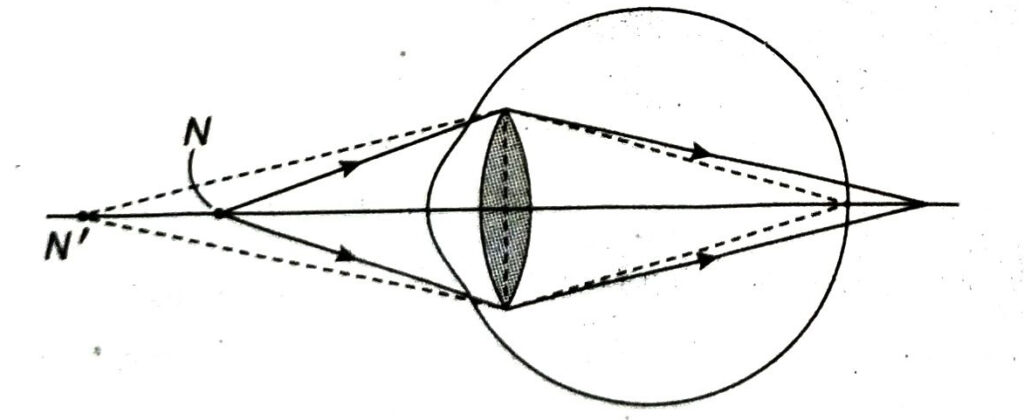
Q.11 What is the remedy for the defect of long sightedness? Explain with proper diagram.
Ans. If a pair of spectacles with convex lenses of suitable focal lengths are used, the defect of long sightedness can be remedied.
Let the near point of an individual with the defect of long sightedness be N’ and the near point for the normal eye be N [Fig. 75]. The focal length of the convex lens is such that after refraction through the lens, the virtual image of the point N is formed at N’. As a result, the point N appears to be at the point N’.
Q.12 What is myopia? Explain the defect of short sightedness with proper diagram.
Ans. If one can see the nearby objects but not the distant objects very clearly, then this defect is called short sightedness or myopia.
A beam of parallel rays coming from a distant object, after refraction by the lens of the eye is focused at a point A in front of the retina instead of getting focussed at the retina [Fig. 76]. In this case, the far point is displaced to some point in front of the eyes instead of being located at infinity (at F in Fig. 76).
Q.13 What is the remedy for the defect of short sightedness? Explain with a diagram.
Ans. If a pair of spectacles with concave lenses of suitable focal lengths are used, the defect of short sightedness can be remedied.
The focal length of the concave lens is such that the incident parallel rays coming from any distant object, after refraction through the concave lens, appear to diverge from a point F and the image is formed at the retina [Fig. 77).
Q.14 What is a lens? How many types of lens are there? Mention them.
Ans. A lens is a transparent refracting medium bounded by two spherical surfaces or one spherical surface and another plane surface.
There are two types of lens. One is called convex lens and the other is called concave lens.
Q.15 Define the first principal focus of convex lens with a proper diagram.
Ans. The first principal focus of a convex lens is a point located on the principal axis of the lens, such that the divergent rays coming from it, become parallel to the principal axis of the lens after refraction through the lens. In Fig. 79, F₁ is the first principal focus of a convex lens.
Q.16 Define the first principal focus of concave lens with a proper diagram.
Ans. The first principal focus of a concave lens is a point on the principal axis such that an incident beam of light rays directed towards it, emerges parallel to the principal axis after refraction through the lens.
In Fig. 80, F1 is the first principal focus of a concave lens.
Q.17 Define the second principal focus of a concave lens with diagram. Identify the focal distance and the focal plane in the diagram.
Ans. A beam of light incident parallel to the principal axis of a concave lens appears to diverge from a point on the principal axis after refraction by the lens. This point is called the second principal focus F2 of the lens [Fig. 81].
In Fig. 81, OF2 is the focal length of the lens and PQRS is the focal plane.
Q.18 Explain the following with figures:
(1) Secondary focus of a convex lens
(2) Secondary focus of a concave lens
Ans. (1) A parallel beam of incident light inclined to the principal axis of a convex lens meets at a point on the focal plane after refraction through the lens. This point is called the secondary focus. In Fig. 83, F’ is the secondary focus of the convex lens.
A parallel beam of incident light inclined to the principal axis of a concave lens appears to diverge from a point located on the focal plane. of the lens after refraction through the lens. This point is called the secondary focus. In Fig. 84, F’ is the secondary focus of the concave lens.
Q.19 Explain the converging action of a convex lens.
Ans. Let us suppose that a beam of light parallel to the principal axis is incident on a convex lens [Fig. 85]. To get an idea about the nature of refraction of this parallel beam of rays, the lens is considered to be the sum of a very large number of small sliced (truncated) prisms. The bases of these prisms above and below the principal axis are oriented towards the principal axis. When a ray of light is incident on any small sliced prism parallel to the principal axis, it bends towards the base of the prism due to refraction. As a result, the parallel rays of the beam meet at a particular point on the principal axis after refraction. In this way, a convex lens transforms a beam of parallel rays to a beam of converging rays. That is the reason why a convex lens is also known as a converging lens.
Q. 25 Explain the diverging action of a concave lens.
Ans. Let us suppose that a beam of light parallel to the principal axis is incident on a concave lens. To get an idea about the nature of refraction of this parallel beam of rays, the lens is considered to be an aggregate of a very large number of small sliced (truncated) prisms. The bases of these prisms above and below the principal axis are oriented away from the principal axis of the concave lens. When an incident ray falls on any small sliced prism in a direction parallel to the principal axis, it bends towards the base of the prism due to refraction. As a result, the parallel rays of the beam appear to diverge from a particular point on the principal axis after refraction. In this way a concave lens transforms a beam of parallel rays to a beam of diverging. rays. That is the reason why a concave lens is also known as a diverging lens.
VERY SHORT ANSWER TYPE QUESTIONS
Choose the correct answer
1. The number of principal focus of a lens is
A. one
B. two
C. three
D. four
Ans. B
2. A convex lens forms a magnified real image of an object
A. placed at a distance less than f
B. placed at a distance more than f but less than 2f
C. placed at a distance of 2f
D. placed at a distance of more than 2f
Ans. B
3. The values of object distance and image distance in a convex lens are 10 cm and 20 cm respectively. What is the linear magnification?
A. 1/2
B. 2
C. 1/4
D. 4
Ans. B
4. The distance of the near point of a normal eye is about
A. 20 cm
B. 25 cm
C. 30 cm
D. 50 cm
Ans. B
5. If we place a red glass on a blue glass and observe from the top, what colour does the blue glass convey?
A. blue
B. red
C. yellow
D. black
Ans. D
6. For a concavo-convex lens
A. the radius of curvature of convex surface is less than the radius of curvature of concave surface
B. the radius of curvature of convex surface is equal to the radius of curvature of concave surface
C. the radius of curvature of concave surface is less than the radius of curvature of convex surface
D. one surface is convex and the other surface is plane
Ans. A
7. For a convexo-concave lens
A. the radius of curvature of convex surface is less than the radius of curvature of concave surface
B. the radius of curvature of convex surface is equal to the radius of curvature of concave surface
C. the radius of curvature of convex surface is more than the radius of curvature of concave surface
D. one surface is concave and the other surface is plane
Ans. C
8. The optical centre of a plano-convex lens is located
A. at the point of intersection of the principal axis and the plane surface
B. on the principal axis and is outside the lens but nearer to the plane surface
C. at the point of intersection of principal axis and the convex surface
D. on the principal axis and is outside the lens but nearer to the convex surface
Ans. C
9. A convex lens forms a magnified virtual image of an object when the object distance is
A. equal to f
B. equal to 2f
C. less than f
D. more than 2f
Ans. C
10. A convex lens forms a diminished real image of an object when
A. f < u < 2f
B. u < f
C. u = f
D. u > 2f
Ans. D
11. A convex lens forms a real image of the same size of an object when the object distance is
A. less than f
B. equal to 2f
C. more than 2f
D. more than f but less than 2f
Ans. B
12. When a convex lens forms a virtual image of magnification m then
A. m > 1
B. m = 1
C. m < 1
D. m ≤ 1
Ans. A
13. A concave lens forms
A. always a magnified virtual image
B. always a diminshed virtual image
C. always a virtual image of the same size as the object
D. a magnified real image
Ans. B
14. The focal length of a lens depends
A. only on the colour of the incident light
B. only on the refractive index of the materials of the lens with respect to the surrounding medium
C. only on the radius of curvature of the two spherical surfaces
D. on all the above three
Ans. D
15. If an object is kept at a distance of more than f but less than 2f in front of a convex less, then image distance is
A. less than f on the other side
B. more than 2f on the other side
C. more than f on the same side as the object
D. 2f on the other side
Ans. B
16. If an object is kept at a distance of more than 2f in front of a convex lens, then image distance is
A. more than 2f on the other side
B. more than f but less than 2f on the other side
C. more than f on the same side as the object
D. more than 2f on the other side
Ans. B
17. If an object is kept at a distance of less than f in front of a convex lens, then the image distance is
A. always less than the object distance
B. less or more than the object distance
C. always more than the object distance
D. less or equal to the object distance
Ans. C
18. If an object is kept in front of a concave lens, then the image distance is
A. always more than the the object distance
B. always less than the object distance
C. more or equal to the object distance
D. more or less than the object distance
Ans. B
19. To minimise the reflection of light, the inner walls of a pin-hole camera should be coloured in
A. white
B. red
C. yellow
D. black
Ans. D
20. A person with a defect of long sightedness should use
A. convex lens
B. concave lens
C. cylindrical lens
D. toric lens
Ans. A
21. A person with a defect of short sightedness should use
A. convex lens
B. concave lend
C. cylindrical lens
D. toric lens
Ans. B
22. A convex lens
A. converges light rays
B. diverges light rays
C. form real images always
D. form virtual images always
Ans. A
23. Near and far points of human eye are
A. 25 cm and infinity
B. 50 cm and infinity
C. infinity and 0 cm
D. 0 cm and 25 cm
Ans. A
24. For a normal eye, the least distance of distinct vision is
A. 0.25 m
B. 0.5 m
C. 25 m
D. infinity
Ans. A
25. Image formed on retina is
A. real and inverted
B. virtual and erect
C. real and erect
D. virtual and inverted
Ans. A
26. The impact of an image on the retina remains for
A. 0.1 s
B. 1 s
C. 0.5 s
D. 10 s
Ans. A
27. The transparent watery liquid acts as the refracting medium of light and occupies the space between the cornea and the eye lens is
A. aqueous humour
B. vitreous humour
C. tear
D. glycerin
Ans. A
Answer in brief
1. Which lens is known as converging lens?
Ans. A convex lens is known as converging lens.
2. Which lens is known as diverging lens?
Ans. A concave lens is known as diverging lens.
3. Can the optical centre of a lens be outside the lens?
Ans. Yes, the optical centre of a lens can be outside the lens. For example, concavoconvex lens, convexo-concave lens.
4. How many principal focal points of a lens are there?
Ans. There are two principal fccal points of a lens.
5. How many secondary focal points of a lens are there?
Ans. There are infinite number of secondary focal points of a lens.
6. What is the nature of the path of the refracted rays when the rays incident on a lens are directed towards the optical centre?
Ans. If the incident rays are directed towards the optical centre, the rays get refracted along the same path.
7. Which lens always forms a virtual image?
Ans. A concave or diverging lens always forms a virtual image.
8. At a particular position of an object in front of a lens, an image of the same size as the object is formed. What is the nature of the lens?
Ans. The lens is convex in nature.
9. In which lens, a virtual image is formed which is smaller than the object?
Ans. Such an image is formed by a concave lens.
10. Which type of lens is used as a magnifying glass?
Ans. A convex lens is used as a magnifying glass.
11. If a finger is viewed from the opposite side of a lens, the finger looks smaller. What is the nature of the lens?
Ans. The lens is concave in nature.
12. If a finger is viewed from the opposite side of a lens, the finger looks larger. What is the nature of the lens?
Ans. The lens is convex in nature.
13. Where should a convex lens of focal length 10 cm be placed in order to read the small letters of a book?
Ans. The lens has to be placed at a distance of less than 10 cm from the book.
14. Does a camera form a real or a virtual image of an object?
Ans. A real image of the object is formed in a camera.
15. What is the main function of retina?
Ans. The main function of the retina is to form an image of the object.
16. Which portion of the retina does not contain any photosensitive cell?
Ans. The blind spot of the retina does not contain any photosensitive cell.
17. Which wavelength of light does produce a sensation of vision in our eyes?
Ans. Light of wavelength 4000Å to 8000Å produces a sensation of vision in our eyes.
Fill in the blanks
1. Pupil is present at the centre of ………..
Ans. iris
2. Near point is situated at a longer distance than normal distance for a man with ………. sightedness.
Ans. long
3. Far point is situated at a shorter distance than normal distance for a man with ……….. sightedness.
Ans. short
4. If a convex lens is immersed in water, its focal length ………..
Ans. increases
5. A …………. lens always forms a virtual image of an object.
Ans. concave
6. A ………… lens is used in photography.
Ans. convex
7. An object is placed at a distance 2f from a convex lens of focal length f. The size of image formed is ……….. that of the object.
Ans. equal
8. A magnifying glass is a ……….. lens.
Ans. convex
State whether true or false
1. When a ray of light passes through the optical centre of a thin lens, there is no deviation or lateral displacement of the light ray.
Ans. True
2. A concave lens kept in the air medium acts as a converging lens.
Ans. False
3. A person suffering from near-sightedness cannot see the nearby objects clearly.
Ans. False
4. The colour of an opaque object is that it absorbs.
Ans. False
5. If an object does not reflect any colour at all, it appears to be black in colour.
Ans. True
6. The colour of the rays of light that emerge from a transparent object appears to be the colour of the object.
Ans. True
7. In case of concavo-convex lens optical centre lies out side the lens.
Ans. True
8. A thin lens is one of which the thickness at the principal axis is small compaired with the radii of curvature of the two surfaces.
Ans. True
9. Air bubble into water acts like a concave lens.
Ans. True
10. Magnifying glass is concave lens.
Ans. False
11. Image formed by convex lens may be magnified and virtual.
Ans. True
TOPIC – D
Dispersion of Light and Light Wave
SHORT AND LONG ANSWER TYPE QUESTIONS
Q.1 What is dispersion of light? What is a spectrum? What is the sequence of colours in the spectrum of white light?
Ans. A polychromatic light breaks into different colours while passing through a refracting medium. This phenomenon is called dispersion of light.
The band that is obtained due to the dispersion of polychromatic light in different colours is known as the spectrum.
The spectrum that is produced due to the dispersion of white light through a prism has red colour at the top and violet colour at the bottom. The colours are arranged from bottom to top in the following order: violet, indigo, blue, green, yellow, orange and red.
Q.2 With the help of an experiment, show that a prism does not create colour but disperses a polychromatic light.
Ans. A prism does not create colours; it simply separates the different colours present in white light. An experiment can be performed to demonstrate this. A beam of white light is incident on prism P₁ through a small slit S [Fig. 98]. The rays emerging from the prism form a spectrum VR on the screen. There is another small slit S₁ in the screen C₁. By moving the screen up and down, any ray of the spectrum (say, yellow-coloured ray) is sent through S₁ and is made to fall on another prism P₂. The emergent rays from P₂ fall on another screen C₂. It can be seen that this light is not divided into different colours, i.e., no spectrum is formed. The same thing happens for other colours. This proves that the prism does not create any colour.
Q.3 Speeds of light in water and glass are 2.25 × 108 m/s and 2 × 108 m/s respectively. Which medium is optically denser?
Ans.
As refractive index of glass is greater than that of water, glass is the optically denser medium.
Q.4 Why is there no dispersion of light when white light falls on a rectangular slab of glass?
Ans. Let us assume that a beam of white light is incident on a face of a rectangular glass slab. This beam of light is composed of innumerable rays. As the refractive index of glass is different for seven constituent colours of white light, dispersion occurs for each ray at the surface of separation. Now as the slab is a rectangular one, when these
spectrum emerge from the other face of the slab, they overlap with each other to form white light, Only lights at the two ends (red and violet) are refracted, whose amount is negligible as compared to the amount of refracted white light. So, there is no dispersion is found in a rectangular glass slab.
Q.5 What is a visible spectrum?
Ans. Electromagnetic waves which have wavelengths between 4000 Å and 8000 Å produce a sensation of vision in our eyes. The waves within this range constitute a visible spectrum.
Q.6 Write down the uses of X-ray and also its harmful effects.
Ans. Uses of X-ray:
- To detect fracture in bones or inner structure of teeth.
- In the treatment of cancer and also in reasearch for cause different diseases.
- To study the structure of crystals.
- In forensic investigation.
Harmful effect: It may damage a normal cell if the cell is exposed to it for a prolonged period of time.
Q.7 What is the role of different colours of light to form the colour of an opaque body? Write down with examples.
Ans. If an opaque body is kept in sunlight, it appears to be of the same colour which it reflects. If the body reflects more than one colour, it appears to have that colour which is produced by mixing those reflected colours.
For example, it can be said that when sunlight falls on a red species of chinarose, it absorbs all colours except red. As it reflects only red colour, red species of chinarose looks red. Again, a leaf looks green because when sunlight falls on a leaf, it reflects only green light.
Q.8 Why does sky look blue during day?
Ans. Rays of the sun travel a long distance through the atmosphere before coming to the earth’s surface. Small dust particles and molecules of gas present in the atmosphere cause scattering of this sunlight. As the wavelength of red light is greater than other lights in the visible spectrum, scattering of red light is less. But for blue or violet lights, scattering is more as the wavelength of these lights is less. Our eyes are more sensitive to blue light than violet, and so the sky appears blue to us.
Q.9 Why is red light used as a danger signal?
Ans. Red light has the longest wavelength among the lights of the visible spectrum. As a result, red light has the lowest amount of scattering. That is why red light is used as a danger signal.
Q.10 Why does the sun appear red during sunset and sunrise?
Ans. The sun remains at horizon during sunrise or sunset, so the rays of the sun have to travel a long distance through the atmosphere. Among the seven constituent colours of the sunlight, red light has the longest wavelength and so the scattering for it is the least. The other lights with smaller wavelengths have greater scattering and as a result, do not reach the earth’s surface. Only red light reaches the earth. So, the sun appears red during sunset and sunrise.
Q.11 Why yellow light is used as fog light in a vehicle?
Ans. Fog scatters the visible light in different directions, so we cannot see distant objects. As the wavelength of yellow light is comparatively greater, scattering is less and it is easy to see through the fog. But scattering of red light is lesser but eyes are more sensitive to yellow light than red light. That is why yellow light is used as fog light in a vehicle.
VERY SHORT ANSWER TYPE QUESTIONS
Choose the correct answer
1. In dispersion of white light with a prism, the colour appears on the top of the screen is
A. violet
B. red
C. yellow
D. green
Ans. B
2. In dispersion of white light with a prism, the colour appears at the bottom of the screen is
A. violet
B. blue
C. red
D. orange
Ans. A
3. Among the following electromagnetic waves, which one has the longest wavelength?
A. ultraviolet radiation
B. visible light wave
C. microwaves
D. X-rays
Ans. C
4. Among the following electromagnetic waves, which one has the highest energy?
A. radiowaves
B. microwaves
C. infrared waves
D. visible light wave
Ans. D
5. Which colour does scatter least?
A. violet
B. blue
C. yellow
D. green
Ans. C
6. Which colour does scatter most?
A. green
B. yellow
C. orange
D. red
Ans. A
7. Among the following colours of light whose velocity is maximum while passing through a glass slab?
A. red
B. blue
C. yellow
D. violet
Ans. A
8. What will be the colour of the sky as seen from the earth, if there is no atmosphere
A. black
B. blue
C. red
D. green
Ans. A
9. A sun set or sun rise, the sun looks more red than at mid day because of
A. the scattering effect of light
B. the effected of refraction
C. the effect of diffraction
D. the sun is hottest at these time
Ans. A
10. The colour of the sky is blue due to
A. bending of light beam
B. dispersion of light
C. scattering of light
D. reflection of light
Ans. C
Answer in brief
1. In case of dispersion of white light a prism, which colour has the maximum angle of emergence?
Ans. Red light has the maximum angle of emergence.
2. In case of dispersion of white light a prism, which colour has the minimum angle of emergence?
Ans. Violet light has the minimum angle of emergence.
3. In an electromagnetic spectrum, which one has the minimum wavelength (or highest frequency)?
Ans. γ-ray in an electromagnetic spectrum has the minimum wavelength (or highest frequency).
4. What is the speed of light in vacuum?
Ans. The speed of light in vacuum is 3 × 108 m/s.
5. In an electromagnetic spectrum, which one has the maximum wavelength (or lowest frequency)?
Ans. Radio wave in an electromagnetic spectrum has the maximum wavelength (or lowest frequency).
6. Which property of light explains the blue colour of the sky during day?
Ans. Blue colour of sky during day can be explained by the property of scattering of light.
7. Which ray among visible spectrum scatters the most?
Ans. Violet ray scatters the most.
8. Which colour is used as a danger signal?
Ans. Red colour is used as a danger signal.
9. Which ray among visible spectrum scatters the least?
Ans. Red ray scatters the least.
Fill in the blanks
1. The refractive index of any medium is ………… for red light than for yellow light.
Ans. less
2. γ-ray is …………. powerful than X-ray.
Ans. more
3. Wavelength of microwave is …………. than that of radio wave.
Ans. less
4. ………….-ray is used to determine the structure of a crystalline material.
Ans. X
5. In radiotherapy, ………… -ray is used to destroy the cancer cells of a patient.
Ans. γ
6. If the speed of light in a medium is 1.5 × 108 m/s, refractive index is ………
Ans. 2
7. ………… of scattered light is inversely proportional to the λ4.
Ans. Intensity
8. The phenomenon of splitting up of polychromatic light into different colours is called ……… of light.
Ans. dispersion
9. Rainbow is the natural phenomenon of ……….. of light.
Ans. dispersion
10. Red, green and blue these three colours are called ……….. colours.
Ans. primary
11. ………… light is always used as danger signal.
Ans. Red
12. Glass is a ………… medium.
Ans. dispersive
13. Any two colours which on mixing together gives the sensation of white are known as ………. colours.
Ans. complementary
State whether true or false
1. White light is a monochromatic light.
Ans. False
2. A prism does not create colour.
Ans. True
3. Glass is a dispersion medium whereas vacuum is not.
Ans. True
4. Material is medium propagation of electromagnetic wave. necessary for
Ans. False
5. The colour of opaque object is determined by the colour it absorbed.
Ans. False
6. The colour of a transparent object is determined by the colour it can transmit.
Ans. True
7. Red glass absorbs all other colours except red.
Ans. True
8. If a body reflects no light, it looks black.
Ans. True
9. A red rose appears blue when viewed through green glass.
Ans. False
10. Speed of γ-rays and that of X-rays are different in vacuum.
Ans. False
11. Wavelength of microwaves is greater than that of radio wave.
Ans. False

